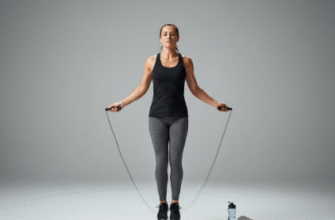Do you ever feel like you’re living mostly from the neck up? Like your body is just a vehicle carrying your busy brain around, handling tasks, rushing through commutes, and eventually collapsing onto the couch? It’s an incredibly common experience in our modern lives. We get caught up in thoughts, worries, digital screens, and endless to-do lists, often forgetting about the very physical foundation of our existence until it complains loudly through pain or exhaustion. We become disconnected, treating our bodies more like machines than the intricate, sensitive, living systems they are. Yoga offers a gentle, profound pathway back to inhabiting our physical selves fully, fostering a reconnection that can feel like coming home.
This isn’t about achieving pretzel-like poses or mastering complex sequences, although those can be part of the practice for some. At its heart, reconnecting with your body through yoga is about cultivating awareness. It’s about shifting your focus from the external chatter to the internal landscape – the subtle and not-so-subtle sensations happening within you right now. It’s learning to listen again, to understand the language your body speaks through feelings of tension, ease, strength, fatigue, warmth, coolness, and the simple rhythm of your breath.
Turning Inward: The Power of Mindful Movement
One of the primary ways yoga facilitates this reconnection is through mindful movement. Unlike exercise purely focused on calorie burning or muscle building, yoga encourages you to pay attention to the how of movement, not just the what. When you link your breath to each action – inhaling as you lift your arms, exhaling as you fold forward – you create an internal anchor. Your breath becomes a constant, rhythmic guide drawing your awareness back to the present moment and the physical experience of being in your body.
Think about a simple pose like Tadasana, Mountain Pose. Standing tall, feet grounded, arms relaxed. Instead of just standing there waiting for the next instruction, yoga invites you to notice. Feel the soles of your feet pressing into the floor. Are you leaning forward or back? Notice the subtle engagement of your leg muscles. Feel the length in your spine, the slight lift in your chest. Become aware of the natural rise and fall of your abdomen or chest with each breath. This deliberate act of noticing, moment by moment, transforms a simple stance into an exercise in embodied presence.
Listening to Sensation Without Judgment
As you move through different postures (asanas), you inevitably encounter a wide range of physical sensations. There might be the satisfying stretch in your hamstrings during a forward fold, the effort in your arms during Plank Pose, or the feeling of balance being challenged in Tree Pose. Yoga teaches us to approach these sensations with curiosity rather than immediate judgment or reaction. Instead of thinking “Ugh, this is hard” or “I can’t hold this,” the practice encourages you to simply observe: “Okay, I feel a strong stretch here,” or “My shoulder feels tight today,” or “My breath is becoming shorter.”
This non-judgmental awareness is key. We often carry harsh critiques about our bodies – how they look, what they can or cannot do. Yoga provides a space to suspend that criticism and simply be with the physical reality of the moment. You learn to differentiate between the productive sensation of a muscle stretching or working (often described as ‘good discomfort’) and the warning signal of sharp, pinching, or electrical pain which indicates you need to back off or modify the pose. This builds trust in your body’s signals.
Listen Closely While You Practice. Yoga is fundamentally about increasing awareness, not pushing past your limits into pain. Sharp, shooting, or joint-related pain is a signal to stop or adjust the pose immediately. Mild muscle fatigue or stretching sensations are normal, but true pain is counterproductive. Always prioritize safety and honor your body’s messages over achieving a specific shape.
Breath: The Bridge Between Mind and Body
Pranayama, the yogic practice of breath control, is another powerful tool for reconnection. While simply noticing your natural breath is a start, specific techniques can deepen your awareness and influence your physiological state. Techniques like Dirga Pranayama (Three-Part Breath) guide your attention sequentially through the belly, ribs, and chest, helping you physically feel the expansion and contraction happening within your torso. Ujjayi Pranayama (Victorious Breath), with its gentle constriction at the back of the throat, creates an audible sound that acts as a focal point, keeping the mind tethered to the physical act of breathing.
Focusing on the breath does several things. It calms the nervous system, shifting you out of the ‘fight or flight’ stress response and into the ‘rest and digest’ parasympathetic state. It anchors your awareness firmly in the present – you can only breathe right now. And it physically connects you to your core, reminding you of the constant life force moving within.
Discovering Your Body’s Inner Landscape
Yoga subtly enhances two crucial types of awareness: proprioception and interoception. Proprioception is your sense of where your body parts are in relation to each other and in space, without necessarily looking. Holding poses, especially balance poses or those requiring precise alignment, sharpens this sense. You become more attuned to how tilting your pelvis slightly changes the stretch in your legs, or how engaging your core provides stability.
Interoception is the awareness of your internal bodily states – things like your heartbeat, hunger, fullness, body temperature, or the need for rest. By quieting the external noise and turning inward during yoga practice, you create space to notice these often-ignored signals. You might become aware of your heart rate increasing during more active sequences and slowing during rest. You might notice subtle feelings of tension in your jaw or shoulders that you carry unconsciously throughout the day. This heightened interoceptive awareness gained on the mat can then translate into your daily life, helping you recognize stress signals earlier or better understand your body’s needs for nourishment or rest.
From the Mat to Daily Life
The benefits of this reconnection extend far beyond the time you spend in yoga poses. When you regularly practice tuning into your body, you start to carry that awareness with you.
- Improved Posture: You might find yourself naturally noticing when you’re slouching at your desk and consciously lengthening your spine, recalling the feeling from your yoga practice.
- Stress Recognition: You become better at identifying the physical precursors of stress – like shallow breathing, a clenched jaw, or tight shoulders – allowing you to intervene earlier with conscious breathing or stretching.
- Mindful Eating: Increased interoception can help you better recognize true hunger and satiety cues, leading to more mindful eating habits.
- Injury Prevention: By understanding your body’s limits and listening to its signals, you’re less likely to push yourself too hard in other physical activities.
- Greater Self-Compassion: Moving away from judgment and towards curious observation fosters a kinder, more accepting relationship with your physical self. You start appreciating your body for what it allows you to do, rather than criticizing its perceived flaws.
Taking the First Steps
If you feel inspired to explore yoga as a way to reconnect with your body, start gently. You don’t need to join an advanced class or twist yourself into complicated shapes. Look for beginner-friendly classes, Hatha yoga, or Restorative yoga, which often emphasize slower movements, longer holds, and deep relaxation. Many resources are available online, but attending a class with a qualified instructor can provide valuable guidance on alignment and modifications, ensuring you practice safely.
The most important thing is your intention. Approach your practice not as another task to achieve, but as dedicated time to listen, feel, and be present in your body. Let go of expectations about flexibility or performance. Some days you might feel energetic and open; other days you might feel tight and tired. Both experiences are valid parts of the process. The goal isn’t perfection, but presence.
A Lifelong Conversation
Reconnecting with your body through yoga isn’t a one-time fix; it’s the beginning of an ongoing conversation. It’s a practice of returning, again and again, to the physical sensations of the present moment. With patience and consistency, yoga can help you bridge the gap between mind and body, allowing you to live more fully, consciously, and comfortably within your own skin. It’s about rediscovering the wisdom held within your physical form and learning to treat yourself with the awareness and care you deserve.








